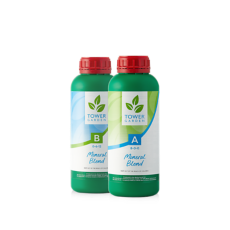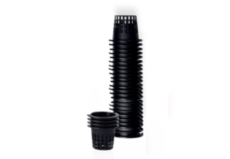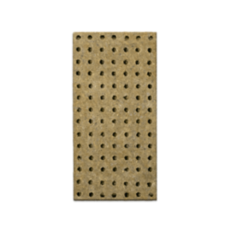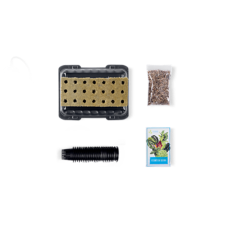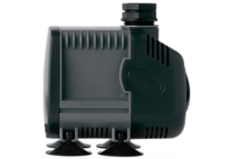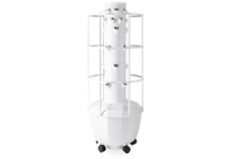Ultimate Guide To A Pest-Free Garden

Pests: They’re arguably the most common, and exhausting challenge for new and seasoned growers alike. While Tower Gardens don’t attract the attention of pests quite like traditional gardens, it’s still a good idea to know what to watch out for and how to deal with pests, if needed.
Whether you’re growing indoors or outside, there are steps you can take to keep pests away from your plants and out of your garden. Here are just a few ways to pest-proof your Tower Garden.
Repelling Pests with Plants
One of the most important steps to an effective pest control strategy is a plan. It’ll pay off in the long run, and your garden will thank you for putting in the effort early on.
One way to do so is by planting crops that actively repel pests. That’s right, there are varieties of common plants that pests will go out of their way to avoid. Planting these in your Tower Garden will significantly reduce the risk of infestation.
In addition to repelling most pests, the following three plants also attract good bugs, offer health benefits, and taste great!
Dill helps prevent aphids, caterpillars, shield bugs, and spider mites.
Mint helps prevent aphids, beetles, caterpillars, shield bugs, and whiteflies.
Nasturtium helps prevent aphids, beetles, caterpillars, and shield bugs.
In addition to these plants, other great crops to grow for pest control include:
Controlling Pests with “Good Bugs”
This tip is specific to outdoor growers, as it involves purposefully attracting bugs to your garden, many of which you won’t want inside your home. With that said, there are bugs out there that won’t harm your crops and will actively seek out pests that might harm your produce. Think of them as security for your Tower Garden.
Here are a few of those “good bugs”:
- Ladybugs and their larvae feed on aphids and other soft-bodied pests. Rejoice if you see these red-orange, spotted beetles in your garden.
- Lacewings and their larvae devour lots of bad bugs, including aphids, caterpillars, leafhoppers, scales, thrips, whiteflies, and even insect eggs.
- Hoverflies resemble small bees—and they actually help with pollination! Their green, slug-like larvae feed on aphids.
- Parasitic wasps are often almost too small to see. They prey on aphids and caterpillars.
- Predatory true bugs, which include spined soldier bugs, assassin bugs, pirate bugs, and others, feed on various caterpillars and beetles.
- Spiders may not be what you love to see on your Tower Garden, but they’re valuable allies, eating all kinds of pests. Plus, those that typically inhabit gardens aren’t poisonous.
- Tachinid flies, which basically look like houseflies, are natural enemies of caterpillars, beetles, and shield bugs.
If you go this route, be sure to thoroughly wash your produce before eating, cooking, or storing it.
Environment-Friendly Sprays
If you happen to find pests living on your Tower Garden rent-free, you may have to deal with them the old-fashioned way — by spraying. Since Tower Garden is all about clean, healthy living and DIY, we recommend creating your own sprays from ingredients you probably have at home, instead of immediately buying premade sprays with some ingredients that can actually damage your garden and the environment at large.
Believe it or not, the sprays you mix at home can be just as effective as the commercial stuff that sells for top dollar. Here are the recipes for two of our favourite organic sprays.

DIY Spray for Virtually All Pests
This formula is effective for most garden pests and may even help deter rodents and deer. Here’s how to make it:
- Chop, grind, or liquefy 1 garlic bulb and 1 small onion.
- Add 1 teaspoon of powdered cayenne pepper and 1 litre of water. Mix.
- Steep 1 hour, then strain through cheesecloth, and add 1 tablespoon of liquid dish soap to the strained liquid; mix well.
- To avoid skin and eye irritation, wear rubber gloves and keep the mixture away from your eyes and nose when preparing and applying it. Refrigerate any remaining spray for up to 1 week in a covered container.
Insecticidal Soap + Neem Oil Spray for Most Insects
Many organic gardeners use this powerful combination for aphids, mites, thrips, whiteflies, and other small, soft-bodied insects.
In your spray bottle, combine:
- 1 tablespoon of insecticidal soap
- 1 tablespoon of neem oil
- 4.5 litres of water
- After spraying, discard any remaining mixture and clean your applicator.
There are a few other natural sprays you can make at home that can be effective, too. If you do want to look at other options, make sure to read through the ingredients carefully to ensure they won’t impact your crops too much.
Keeping a Clean, Tidy Tower
While Tower Gardens are essentially low-maintenance, it’s crucial that you keep your garden clean and tidy if your goal is to have a pest-free garden. It’s not because pests are scared of clean spaces, but because dead plant debris often acts as a haven for pests and their eggs.
Regularly harvesting and pruning your plants will also rob pests of places to hide and prevent the growth of plant diseases. Plus, when your plants don’t touch, pests that can’t fly will have a harder time spreading.
Other Secrets to a Pest-Free Garden
Aside from the tips mentioned above, there are a handful of others to keep your garden pest and stress-free.
Grow in a Suitable Location
Successful pest prevention begins before you even plant a seed by selecting a suitable place to grow. An ideal growing space has at least two traits
- Lots of Light: Most food crops require six or more hours of direct sunlight, so it’s important that you don’t place your garden in a shaded area or outdoor location that only receives a couple of hours of direct sunlight each day. If you're growing indoors, make sure you're growing with LED grow lights.
- Distance from Other Plants: If you plan on growing outdoors, odds are you’ve already got bad bugs crawling around out there. If you place your tower too close to other plants, the chances of those bugs moving to your Tower Garden are very high.
Start with Strong Seedlings
It’s important to note that unhealthy plants practically lay out a welcome mat for pests. This is especially true in the case of seedlings. So, whether you sprout your own or buy from a reputable grower, look for these key characteristics:
- Compact, Sturdy Stature and Deep Color: Avoid seedlings that are lanky, are pale, or show any signs of disease, as these won’t have the resources to naturally fight off pests. (They’ll also grow slowly and produce lacklustre harvests.)
- Absence of Pests: It probably goes without saying, but you should choose only pest-free seedlings. If you introduce an infested plant into your garden, it’s only a matter of time before the problem spreads to other crops.
Check for Pests Often
At least twice a week, use a magnifying glass to look for pests among your plants. Most vegetable pests eat and live on the new growth and undersides of leaves, so be sure to inspect these areas closely. If you find something and aren’t sure what it is, check out this quick reference guide.
Keep in mind that many pests go through multiple life stages that may look quite different from one another. Generally speaking, if you see a bunch of small stuff you don’t recognize, it may be the early stages of a common pest, such as aphids.
Happy (Pest-Free) Gardening!
So, there you have it: Tower Garden’s guide to simple, successful pest control. From understanding good and bad bugs to knowing how to check your garden for pests, there are many things you can do as a grower to prevent infestations. If you do see pests, be sure to try out one of the homemade pest control sprays described above.


